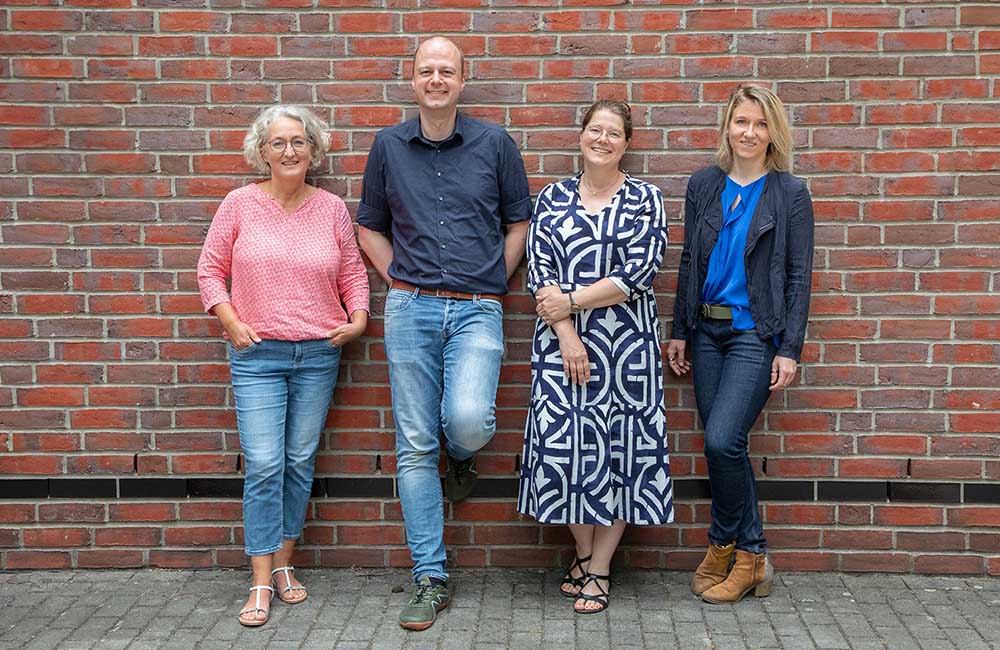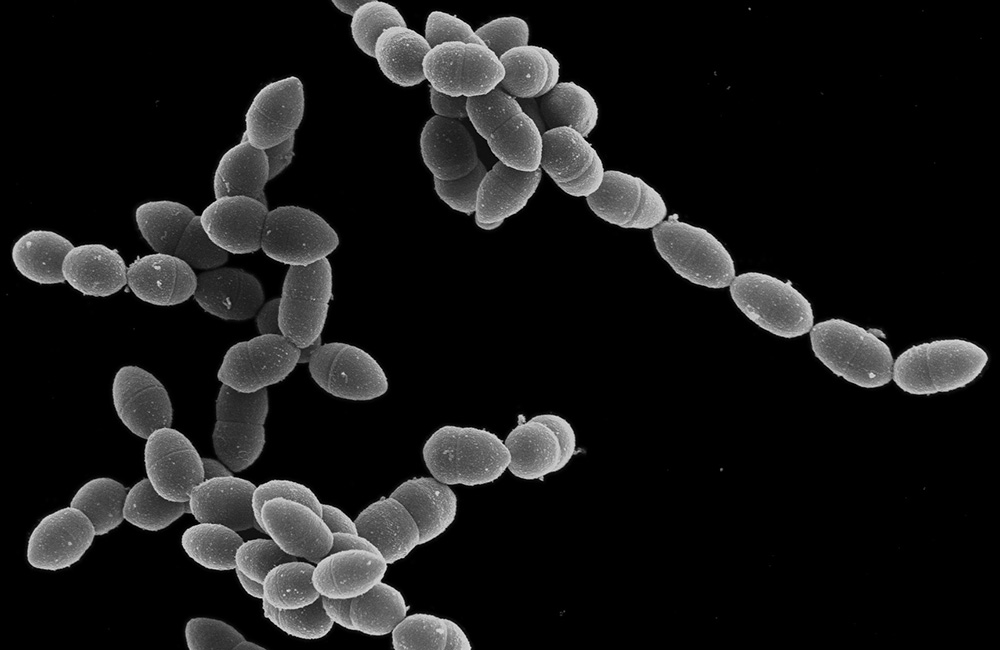Long-term effects of influenza A virus infections on lung cells and their response to pneumococci
Flu viruses (influenza) can trigger epigenetic changes in the alveolar epithelium, the cell layer that lines the air sacs (alveoli), i.e. permanent changes in gene activity without changing the DNA itself. These changes have a lasting effect on subsequent immune responses and result in the body no longer being able to react appropriately to the bacterial pathogens in the event of a subsequent infection with pneumococci.
A research team led by Prof Dunja Bruder (Institute of Medical Microbiology and Hospital Hygiene, UMMD and HZI) has published new findings on the long-term consequences of an influenza A infection in a mouse model in the journal Cell Communication and Signalling. The study shows that changes in the lungs - especially in the alveolar type II epithelial cells (AECII) - persist beyond virus elimination. AECII are central players in immune defence and tissue regeneration. The researchers investigated how surviving the flu influences their reaction to different pneumococcal serotypes. The study was conducted in close cooperation with the University Clinic for Pneumology at the UMMD and the Helmholtz Centre for Infection Research (HZI) in Braunschweig.

Photo: Prof Dunja Bruder's team (from left): Prof Dr Dunja Bruder, Dr Andreas Jeron, PD Dr Sabine Stegemann-Koniszewski, Dr Julia Boehme. Photographer: Melitta Schubert/UMMD
Dangerous secondary infection with pneumococci
As a result of the influenza infection, the immune system reacts differently, which favours severe pneumonia caused by pneumococci. These are then often accompanied by excessive inflammation and can severely damage the lungs.
Study background and methodology
As part of the study, mice were first infected with the influenza A virus and then re-infected with different serotypes of the bacterium Streptococcus pneumoniae (pneumococcus). The team analysed both the bacterial spread in the lungs and the inflammatory reactions and changes at the level of the AECII.
Results and significance
The immunological changes were particularly clear in pneumococcal serotype 7F: following a previous flu infection, this triggered a pronounced inflammatory response with strong production of type I and type II interferons - messenger substances that activate the immune system. The AECII also showed epigenetic changes that influenced gene activity in the long term. This revealed that the lungs remain in an altered ‘alarm state’ even after the virus has been eliminated.
These results indicate that influenza leaves an ‘immunological footprint’ in the lungs that shapes the defence against subsequent bacterial infections. ‘This phenomenon, known as “trained immunity”, describes the ability of cells to “remember” previous infections and change their behaviour based on this,’ explain Dr. rer. nat. Julia Boehme and Dr. rer. Andreas Jeron from the Bruder research group.
Classification in the state of research and conclusion
The study contributes to a better understanding of why certain pneumococcal serotypes can be particularly dangerous after influenza. Although over 90 serotypes are known, only a few cause invasive, life-threatening infections. Using a preclinical mouse model, Prof Dunja Bruder's team was able to show for the first time how a survived influenza infection influences the reaction of alveolar type II epithelial cells to different pneumococcal serotypes. ‘In contrast to previous studies, which mostly investigated secondary infections during the acute influenza phase, our work shows that susceptibility to pneumococci also persists during the recovery phase - albeit primarily to invasive serotypes,’ summarises Prof. Bruder. The new findings on epigenetic and immunological changes in AECII provide valuable mechanistic indications of how previous viral infections can impair the antibacterial defence capacity of the lungs in the long term - an aspect that could be important for the development of improved therapeutic and diagnostic approaches for bacterial superinfections in the long term. The study was supported by the German Research Foundation (DFG) and the Helmholtz Association of German Research Centres (HGF).

Graphic: Electron micrograph of a pneumococcal strain. A total of over 90 pneumococcal serotypes are known to date. Helmholtz Centre for Infection Research (HZI) / Dr Mathias Müsken (Image created in cooperation with the department of Prof. Dr Sven Hammerschmidt, University of Greifswald)
Publication
Epigenetic changes and serotype-specific responses of alveolar type II epithelial cells to Streptococcus pneumoniae in resolving influenza A virus infection
Julia D Boehme, Andreas Jeron, Kristin Schultz, Lars Melcher, Katharina Schott, Elif Gelmez, Andrea Kröger, Sabine Stegemann-Koniszewski & Dunja Bruder
Cell Communication and Signaling volume 23, Article number: 278 (2025) Cite this article
https://biosignaling.biomedcentral.com/articles/10.1186/s12964-025-02284-y
Scientific Contact
Prof. Dr. rer. nat. Dunja Bruder
Institute for Medical Microbiology and Hospital Hygiene of the Medical Faculty of the Otto-von-Guericke University Magdeburg
Phone: 0391 67 13374
dunja.bruder@med.ovgu.de
Web: http://immb.med.ovgu.de/






